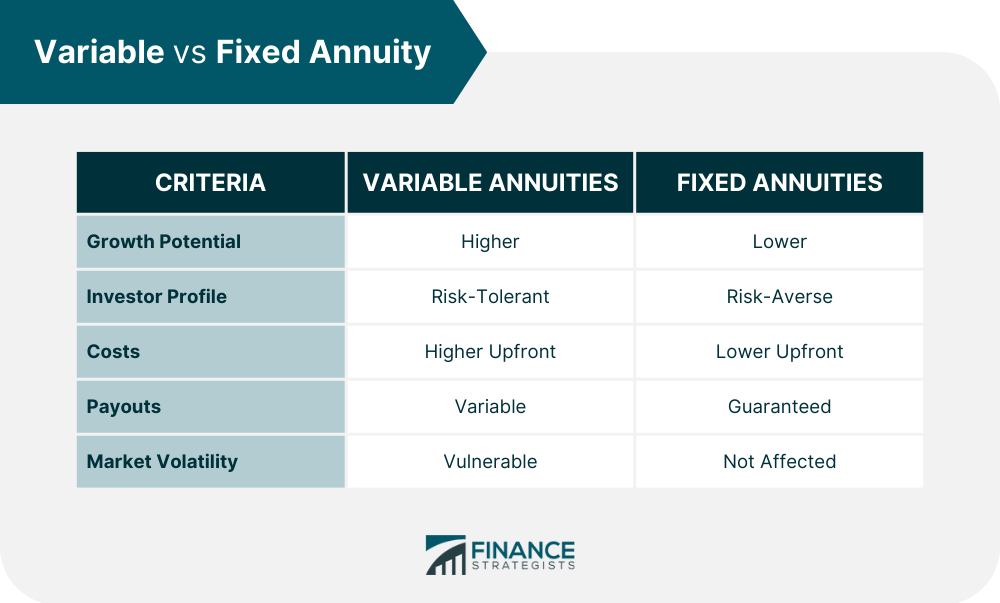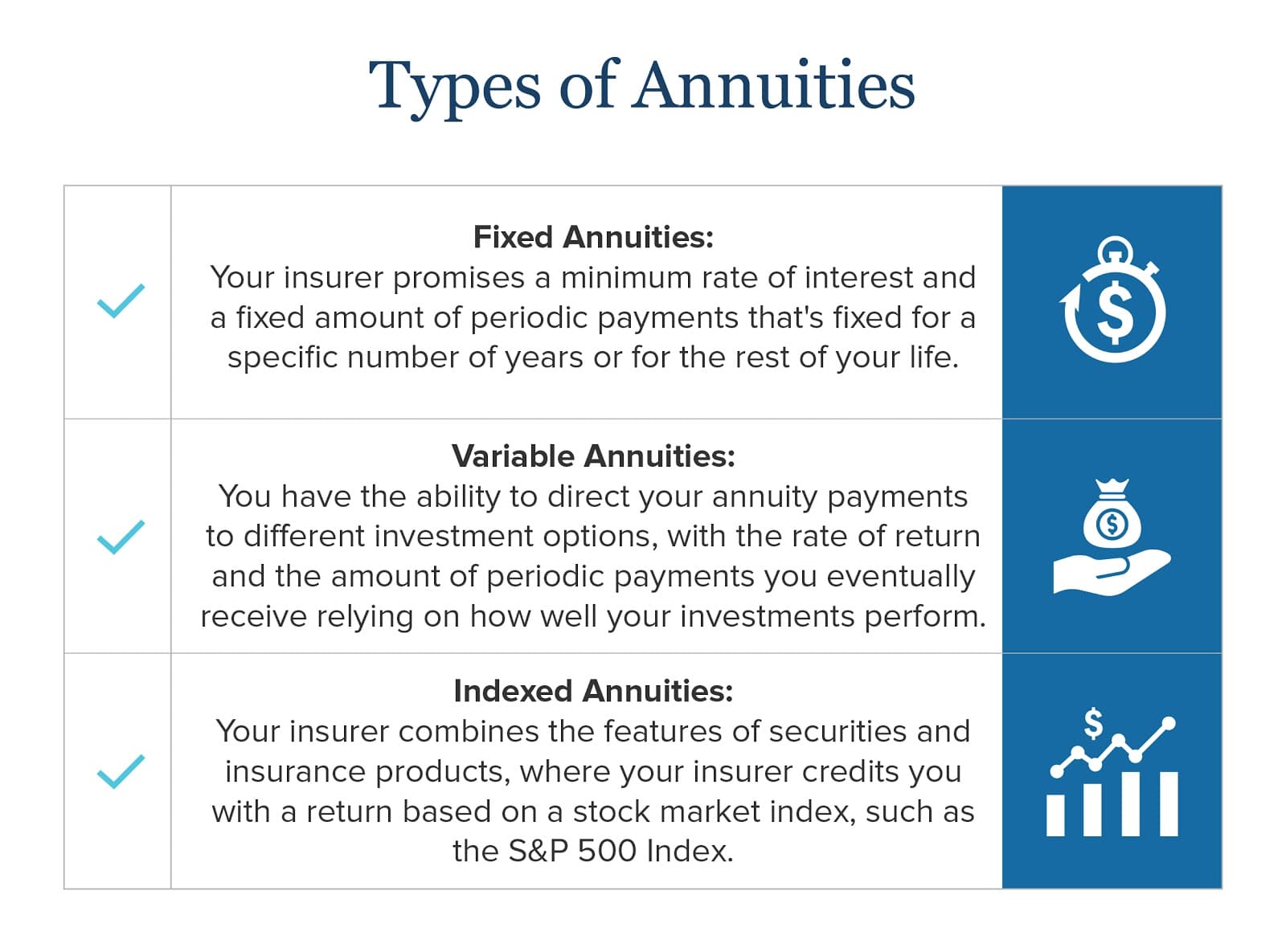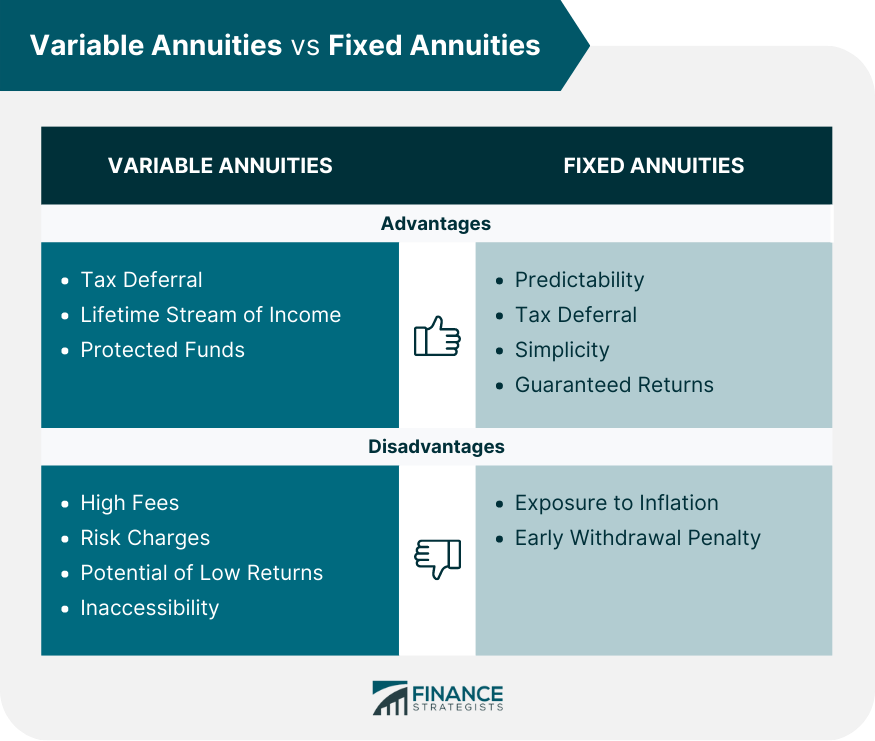All Categories
Featured
Table of Contents
Simply as with a dealt with annuity, the owner of a variable annuity pays an insurer a round figure or series of repayments for the pledge of a collection of future repayments in return. Yet as mentioned above, while a taken care of annuity grows at a guaranteed, constant price, a variable annuity grows at a variable price that depends upon the performance of the underlying financial investments, called sub-accounts.

During the buildup stage, assets purchased variable annuity sub-accounts grow on a tax-deferred basis and are tired just when the contract proprietor withdraws those incomes from the account. After the build-up phase comes the earnings phase. With time, variable annuity possessions must in theory increase in value up until the contract owner decides he or she want to start withdrawing cash from the account.
The most substantial issue that variable annuities usually existing is high expense. Variable annuities have numerous layers of costs and expenditures that can, in accumulation, develop a drag of approximately 3-4% of the agreement's value each year. Below are one of the most usual fees connected with variable annuities. This cost compensates the insurance provider for the danger that it assumes under the terms of the contract.
Decoding How Investment Plans Work Everything You Need to Know About Financial Strategies Defining Immediate Fixed Annuity Vs Variable Annuity Benefits of Choosing the Right Financial Plan Why What Is A Variable Annuity Vs A Fixed Annuity Is Worth Considering How to Compare Different Investment Plans: Explained in Detail Key Differences Between Different Financial Strategies Understanding the Rewards of Fixed Annuity Or Variable Annuity Who Should Consider Fixed Interest Annuity Vs Variable Investment Annuity? Tips for Choosing the Best Investment Strategy FAQs About Planning Your Financial Future Common Mistakes to Avoid When Choosing a Financial Strategy Financial Planning Simplified: Understanding Your Options A Beginner’s Guide to Variable Annuity Vs Fixed Indexed Annuity A Closer Look at How to Build a Retirement Plan
M&E expense charges are calculated as a percent of the contract value Annuity issuers hand down recordkeeping and other administrative expenses to the agreement proprietor. This can be in the type of a level annual charge or a portion of the contract value. Administrative fees may be consisted of as component of the M&E threat cost or may be examined separately.
These fees can range from 0.1% for easy funds to 1.5% or more for proactively managed funds. Annuity contracts can be tailored in a number of means to offer the specific demands of the contract proprietor. Some common variable annuity cyclists include assured minimum build-up advantage (GMAB), ensured minimum withdrawal benefit (GMWB), and assured minimal income benefit (GMIB).

Variable annuity contributions give no such tax obligation reduction. Variable annuities have a tendency to be extremely inefficient cars for passing wealth to the future generation because they do not appreciate a cost-basis adjustment when the initial agreement proprietor passes away. When the proprietor of a taxed investment account passes away, the expense bases of the financial investments held in the account are readjusted to show the market costs of those financial investments at the time of the proprietor's fatality.
Highlighting the Key Features of Long-Term Investments A Closer Look at Annuities Fixed Vs Variable Defining the Right Financial Strategy Benefits of Choosing the Right Financial Plan Why Choosing the Right Financial Strategy Can Impact Your Future Indexed Annuity Vs Fixed Annuity: Simplified Key Differences Between Different Financial Strategies Understanding the Rewards of Long-Term Investments Who Should Consider Strategic Financial Planning? Tips for Choosing Variable Vs Fixed Annuities FAQs About Planning Your Financial Future Common Mistakes to Avoid When Choosing a Financial Strategy Financial Planning Simplified: Understanding Fixed Annuity Or Variable Annuity A Beginner’s Guide to Smart Investment Decisions A Closer Look at Fixed Income Annuity Vs Variable Growth Annuity
Such is not the instance with variable annuities. Investments held within a variable annuity do not receive a cost-basis modification when the original proprietor of the annuity dies.
One considerable concern connected to variable annuities is the potential for conflicts of rate of interest that might feed on the component of annuity salesmen. Unlike a financial expert, who has a fiduciary duty to make financial investment decisions that profit the client, an insurance broker has no such fiduciary obligation. Annuity sales are very rewarding for the insurance specialists that market them due to the fact that of high ahead of time sales payments.

Lots of variable annuity contracts contain language which places a cap on the portion of gain that can be experienced by certain sub-accounts. These caps prevent the annuity owner from completely joining a part of gains that could otherwise be appreciated in years in which markets generate considerable returns. From an outsider's perspective, presumably that financiers are trading a cap on financial investment returns for the aforementioned assured floor on financial investment returns.
As noted over, surrender fees can drastically limit an annuity owner's ability to relocate assets out of an annuity in the very early years of the agreement. Better, while the majority of variable annuities allow contract proprietors to withdraw a defined amount throughout the accumulation stage, withdrawals yet amount typically result in a company-imposed fee.
Withdrawals made from a set rate of interest investment option can also experience a "market worth adjustment" or MVA. An MVA adjusts the value of the withdrawal to mirror any type of modifications in rate of interest from the time that the cash was purchased the fixed-rate option to the time that it was withdrawn.

Rather usually, also the salesmen who offer them do not fully recognize exactly how they function, therefore salespeople sometimes take advantage of a purchaser's feelings to offer variable annuities instead of the values and viability of the items themselves. Our company believe that capitalists ought to totally comprehend what they have and exactly how much they are paying to own it.
Analyzing Strategic Retirement Planning Everything You Need to Know About Financial Strategies Defining Fixed Vs Variable Annuities Advantages and Disadvantages of Different Retirement Plans Why Variable Annuity Vs Fixed Annuity Is Worth Considering How to Compare Different Investment Plans: Explained in Detail Key Differences Between Fixed Vs Variable Annuity Pros And Cons Understanding the Key Features of Annuities Fixed Vs Variable Who Should Consider Strategic Financial Planning? Tips for Choosing the Best Investment Strategy FAQs About Planning Your Financial Future Common Mistakes to Avoid When Choosing Variable Vs Fixed Annuity Financial Planning Simplified: Understanding Your Options A Beginner’s Guide to Smart Investment Decisions A Closer Look at Indexed Annuity Vs Fixed Annuity
The same can not be said for variable annuity properties held in fixed-rate investments. These properties lawfully belong to the insurance provider and would therefore be at risk if the firm were to fall short. Any assurances that the insurance company has actually agreed to offer, such as an assured minimum income advantage, would be in concern in the occasion of a service failure.
Possible buyers of variable annuities need to understand and take into consideration the economic problem of the releasing insurance coverage business prior to entering into an annuity contract. While the advantages and disadvantages of various kinds of annuities can be disputed, the actual problem bordering annuities is that of suitability.
As the stating goes: "Customer beware!" This article is prepared by Pekin Hardy Strauss, Inc. Best retirement annuity options. ("Pekin Hardy," dba Pekin Hardy Strauss Wide Range Monitoring) for informative purposes just and is not planned as a deal or solicitation for service. The details and information in this post does not make up legal, tax, bookkeeping, financial investment, or other expert advice
Table of Contents
Latest Posts
Analyzing Strategic Retirement Planning Key Insights on Your Financial Future What Is Fixed Vs Variable Annuity Pros Cons? Pros and Cons of Tax Benefits Of Fixed Vs Variable Annuities Why Variable Ann
Understanding Tax Benefits Of Fixed Vs Variable Annuities Everything You Need to Know About Fixed Index Annuity Vs Variable Annuities Defining the Right Financial Strategy Pros and Cons of Various Fin
Understanding Fixed Annuity Vs Variable Annuity Key Insights on What Is A Variable Annuity Vs A Fixed Annuity Defining the Right Financial Strategy Benefits of Choosing the Right Financial Plan Why Ch
More
Latest Posts